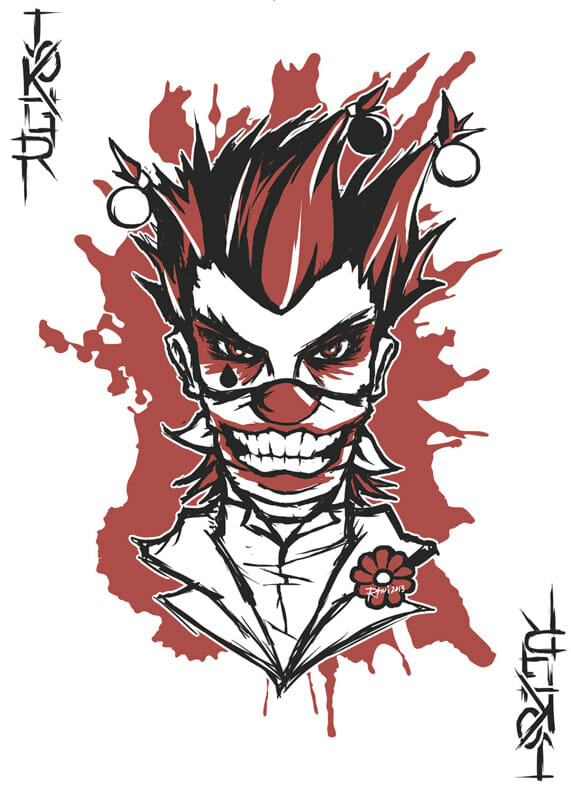During the course of Genre Police, I’ve talked about various tactics and ideas for different genres and ideas to shape play, and during that, I’ve always tried to give warnings and advice when I think that an option I’ve presented needs a gentle hand.

But I’ve never really examined safety tools as a mechanic.
It’s easy to sneer at the need for tools or assume your game will never go to places that are going to push people to their limits.
That’s fine until you plan an aquatic encounter and then discover that one of the players has a thing about deep water and you are pushing all of the buttons.
It’s really useful to have the knowledge beforehand in that situation, believe me. So we’re going to look at a few of the most common safety tools, what they can do for you and where each one falls down if it’s the only thing you are using.
So follow us in the safety dance. We can dance if you want to. Also, as a safety tool, the rest of this article briefly talks about violence, sex, self-harm very briefly. While it isn’t too graphic, I would be hypocritical of me not to say that upfront.
X-Cards
One of the most well-known safety tools in RPG gaming is the x-card or safeword mechanic.
It’s a fairly simple procedure. Essentially there is either a card on the table people can tap, a word they can say or a movement players can do to indicate a particular thing is bothering them and that the GM should get off the subject as quickly as possible.
In the digital arena, the movement is often throwing the arms into an X shape to the camera.
Why Is It Helpful: The idea is this stops any discomfort instantly and prevents the session being bogged down as the GM just moves on and if the person wants to offer an explanation later they can do but don’t HAVE to, leading to a non-judgemental environment for play.
Where it needs work: Primarily, these mechanics only come into play when the problem is already underway. They aren’t a framework for a group to avoid entering problematic areas, just a way of getting out of it.
In some ways, a GM can then subconsciously shift the onus for safety on to a player, who might be too uncomfortable to act. ‘Well, you should have x-carded’ is not a good refrain. If you run x-card games, don’t assume that you can just proceed if no one is protesting. Still read a table.

Lines And Veils
In lines and veils, the players state a set of topics that they would like to be ‘lines’ (an area they don’t want featuring in the game at all) and ‘veils’ (an area that can come up but they don’t want a graphic description of the topic and to draw a line under if it goes there).
The GM take these on board and doesn’t include content of the kind objected too.
Why Is It Helpful: It’s really simple to just set out areas that are off-limits and can really give people a feeling of safety.
For example, most games I play in have veils on sex. It can happen in game world but no one wants to dwell on the specifics of a pairing, just that it happened. The veil is drawn at the bedroom door. That makes people comfortable about pursuing relationships in character, knowing they aren’t going to be forced into an awkward area.
Where it needs work: Sometimes, things will come up in a game that people haven’t thought about and don’t know is a problem.
Maybe they haven’t even thought about it until it’s up in their face. I once was doing lines and veils when someone mentioned a hard line against animal violence, and another player’s eyebrows shot up, and they said ‘oh my god, I hadn’t even considered that that would be the worst thing’.
As a GM, I have no problem with fictionalised violence against anything. So would that second player have been confronted with something deeply horrible to them if the first wasn’t around? Maybe. That thought worries me deeply.

Questionnaire
Safety questionnaires are maybe my favourite tool so far because they’re doing the job of lines and veils but providing a checklist of stuff that might come up. Players can see a list of possibilities and be like ‘nope’ to some of it if they need to.
Why Is It Helpful: This above previous examples is not only catching things before it is an issue but also is a document that a GM can go back to and check.
It can also be filled out anonymously as a group so that people don’t have to share everything that disturbs them.
Where it needs work: I recently handed out a questionnaire set to a Vampire: The Masquerade group and only got one rejection to hardcore sexual description and a lot on animal violence.
This is a bit endemic of groups I hand questionnaires to. People don’t know what’s coming. No one put that self-harm was an issue, but I don’t know they were ready for a Malkavians to tip industrial cleaning fluids onto their face to ‘get the dirt out’.
My point being that despite any having this tool, people will almost always overestimate their ability to be fine about stuff. It isn’t always the things you expect that are gonna get you. I once had to take a break because one of my characters had destroyed an artists ability to make art. The questionnaire is a good start, but it needs to be coupled with an ongoing re-evaluation of the content of the game.
So what can we conclude about safety tools? They are a necessary element, but they need to come as part of a more holistic approach that involves making the table a safe space for all to play.
Next time, we’re going to look at the elements that go into the construction of a safe RPG space, some thoughts on the table as community and what specifically, the rules I use as a professional GM to keep my groups a place everyone can play.
Creative Commons credits: The Joker Card by rHui-009, Friendly Chopper Inbound by Dori-to and Arctic mermaid by neylica.

